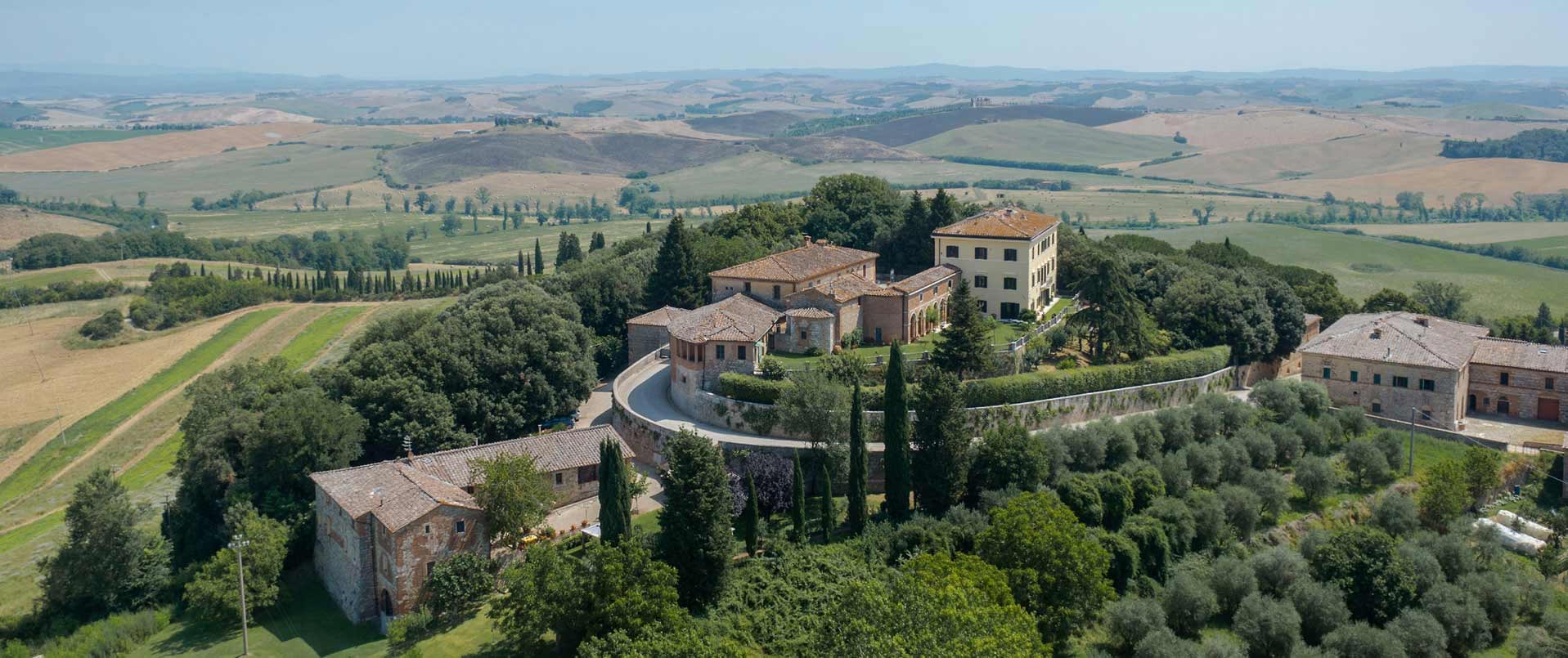
The Palazzo Baronale of Bitetto, constructed outside the walls in the 18th century, stands close to Porta Piscina or Baresana, the only surviving city gate. After navigating the village’s labyrinthine streets, you will reach the main cathedral square, home to the Romanesque Cathedral, the 14th-century Sedile dei Nobili with its “pillory” and Porta Sannicandro. The palazzo, showcasing elegant Baroque-style architecture, reflects the influences of the Neapolitan culture of the time, particularly the Vanvitellian architecture evident in its grand stone walls with “diamond-point” masonry, the majestic entrance arch with an upper balcony, the expansive courtyard and the Baroque façade in local stone, featuring a rusticated base, squared masonry, a tri-arched loggia, and decorative stucco work.
A 16th-17th-century farmhouse estate was added outside the city walls, adjacent to the Baroque palazzo. It incorporated an olive oil mill, oil warehouses and storage, stables and the ancient Prince’s Palace, with a guard post in the Porta Baresana gate. A notable feature was the large cistern for collecting water, a 45-metre-long, 6-metre-high cavity in the rock. This cistern was divided in two in the eighteenth century: one half continued to collect water, while the other became a corridor leading to the cellars and the ancient tavern, a vast room with a barrel vault, stone benches and a large kitchen fireplace.
The history of Palazzo Baronale di Bitetto
In the seventeenth century, Bitetto was under the lordship of Prince Flaminio de Angelis of Mesagne, as noted in inscriptions on Porta Baresana from 1634. By the end of the century, the prince’s residence had become the ancient medieval palazzo within the city walls, complete with a tavern, a chapel, cellars and various annexes. Due to complex inheritance issues, the palazzo was auctioned in 1743 and purchased by Don Francesco Noja, who became Baron of Bitetto. Located on the first step of the Murge, Bitetto had been a prosperous city since the 11th century, boasting the highest taxable land in Bari during the Angevin period. Don Francesco, who had become one of the wealthiest feudal lords in the region, travelled to Naples to commission a grand residence worthy of his new state from an architect trained in the Vanvitellian style. When Sante Noja, the last of the family in the direct line, died without direct heirs in 1855, he left the property to Vincenzo de Ruggero, the son of his sister who had married the baron of Loseto, Nicola de Ruggiero.
Under the de Ruggeros, the property underwent significant and controversial modifications, including partitioning, the lowering of ceilings and roof renovations, but the building lacked proper maintenance as it was only occasionally opened. During the 19th century, parts of the palazzo, especially the main floor, were renovated for Baron Michele de Ruggero’s wedding, with wallpaper and stucco treatments replacing much of the original Baroque fresco work. By around 1930, Palazzo Baronale had been completely abandoned and was left severely damaged by Allied troops during World War II. It suffered further damage from continuous thefts, despite most doors and windows being bricked up. When architect Raffaele de Pinto acquired the palazzo in 1974, it was largely uninhabited and in poor condition. Extensive structural and architectural restoration work was carried out for approximately 10 years. The Baronial Palace is protected under Article 10 of Legislative Decree 01/22/2004 n. 42.
Garden
The garden, also created in the 18th century, is another highlight of this residence. At the time of its construction, the South and East façades of the Palazzo overlooked the surrounding countryside. Today, a series of courtyards leads to the hanging garden, where a 25-metre-tall Mediterranean cypress and a thuja thrive. In the lower part of the garden, two large Lebanon cedars dominate the landscape.
 Film sets
Film sets
 Gardens
Gardens
 Parks
Parks
 Pet Friendly
Pet Friendly
 Private events
Private events
 Visits
Visits
 Weddings
Weddings
 Cultural tourism
Cultural tourism  Cyclotourism
Cyclotourism  Excursions
Excursions  Gardens
Gardens  Hiking
Hiking  Nature
Nature  Tasting
Tasting  Walking itineraries
Walking itineraries  Wine tourism
Wine tourism